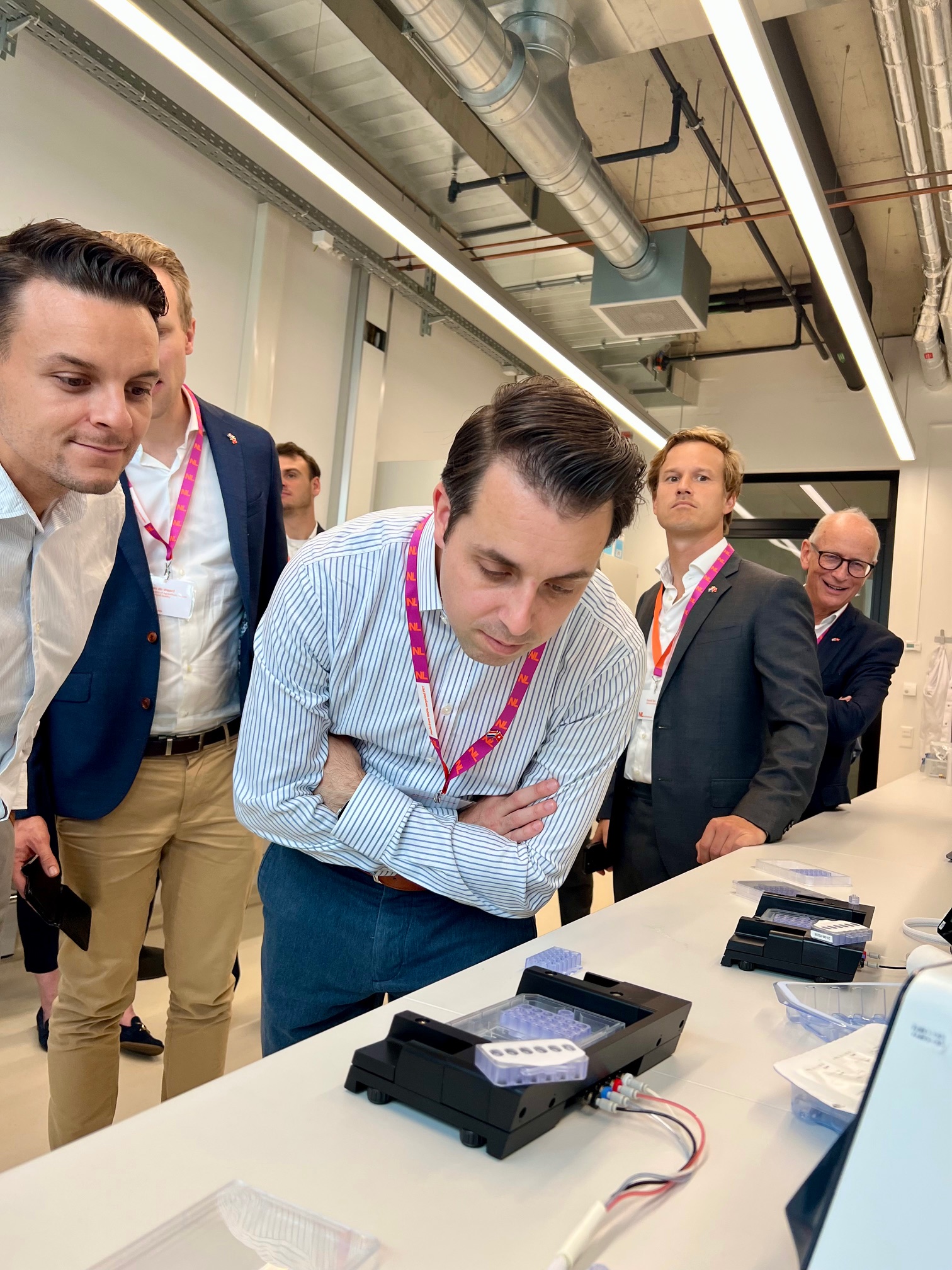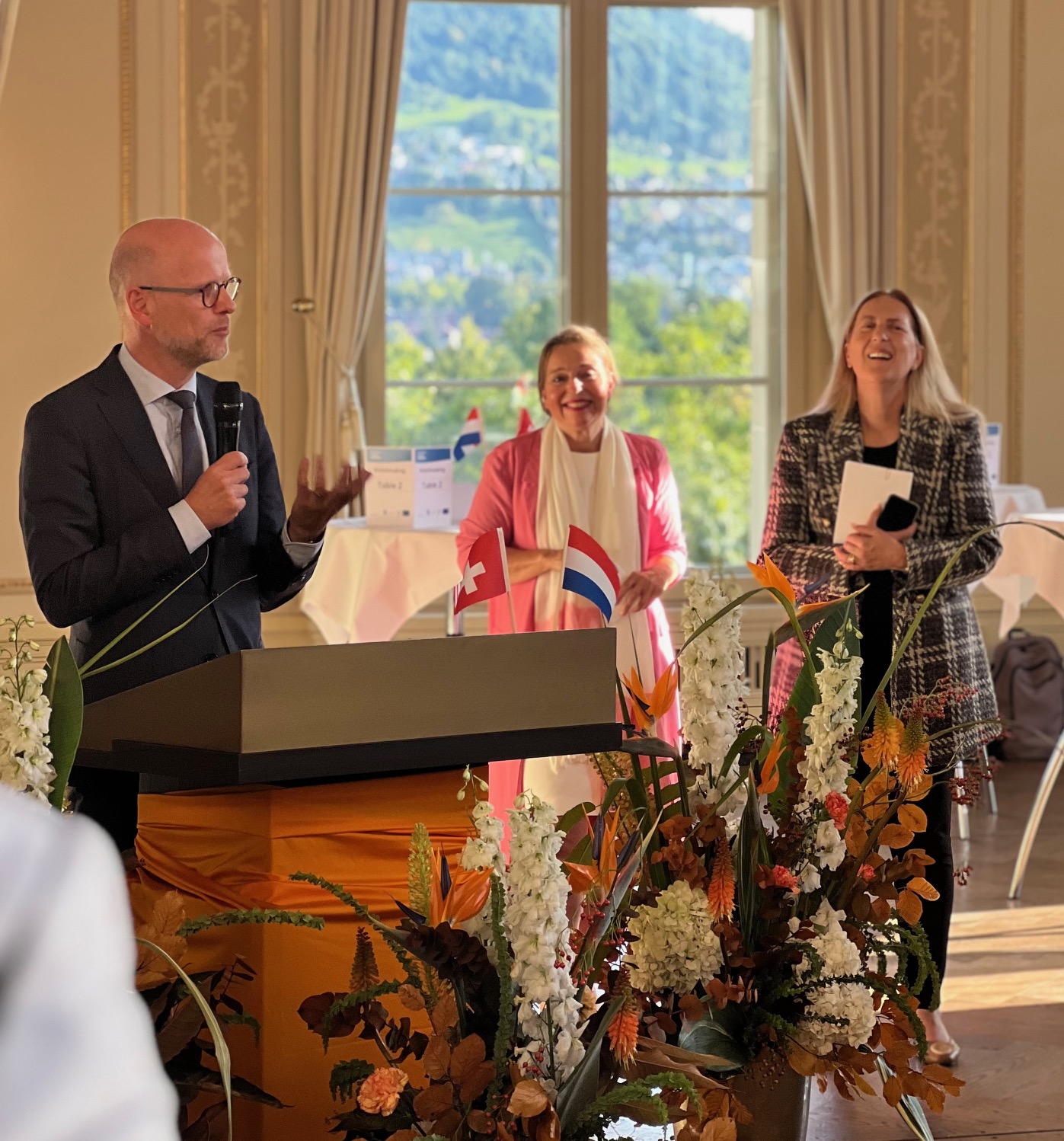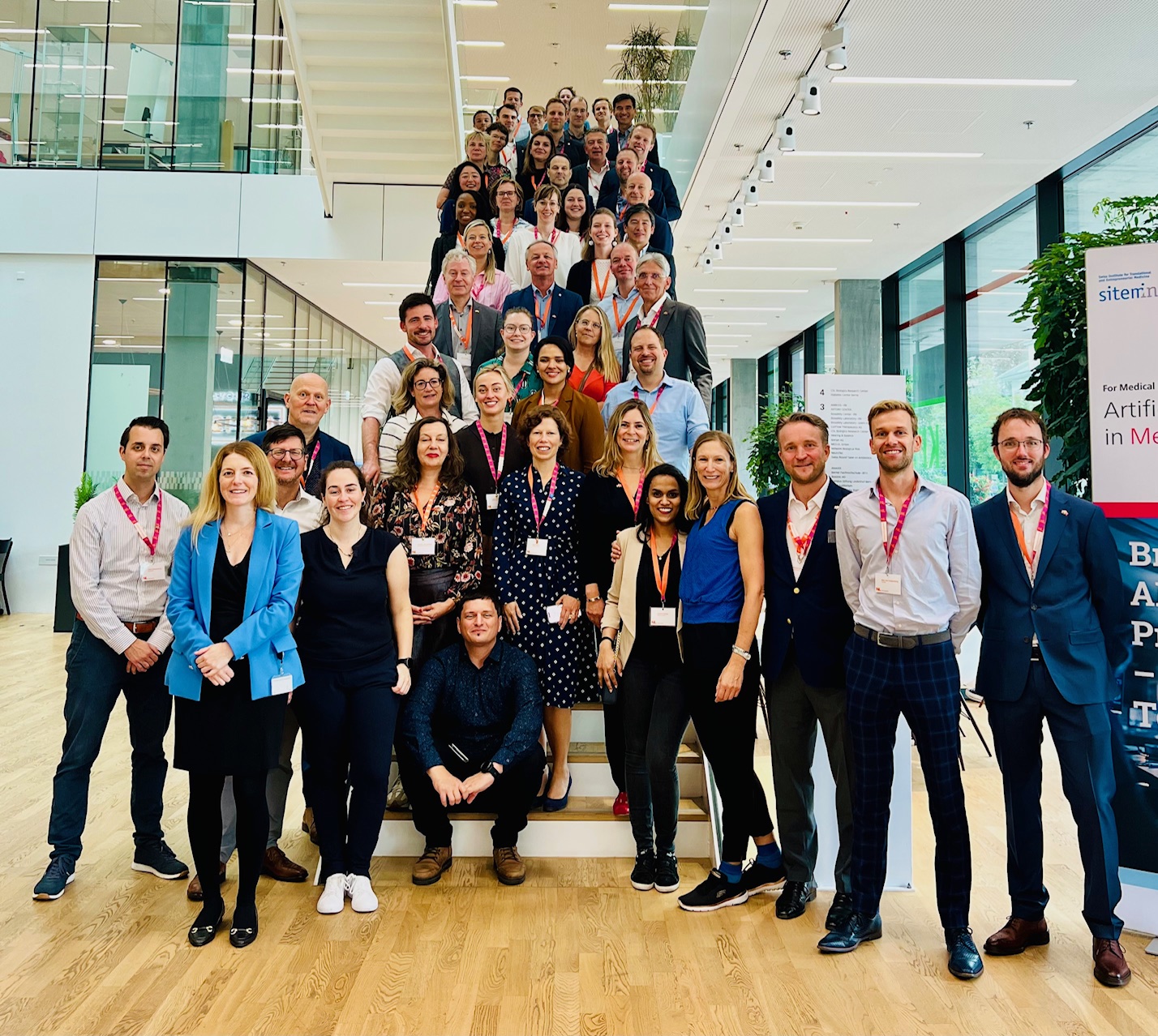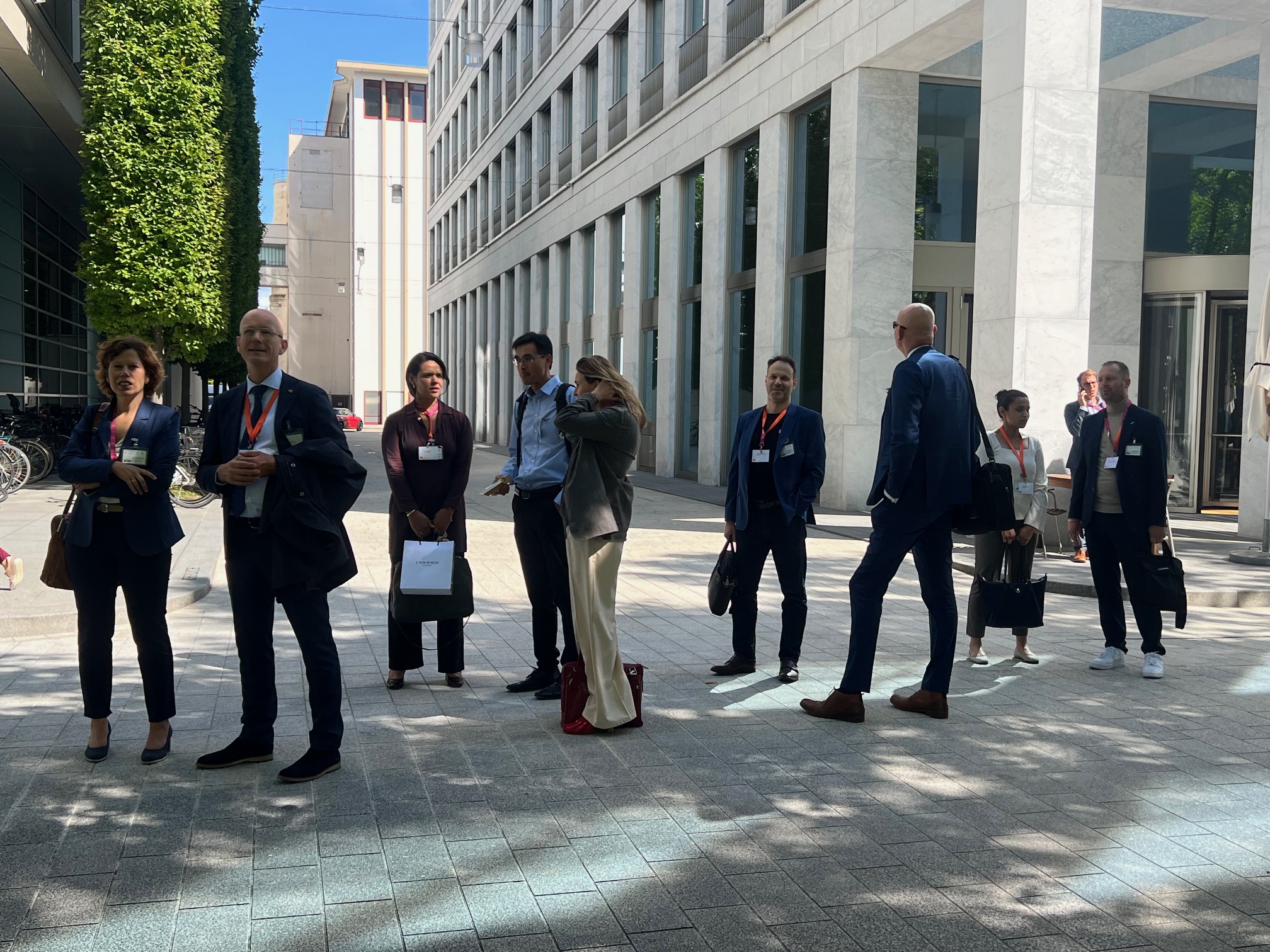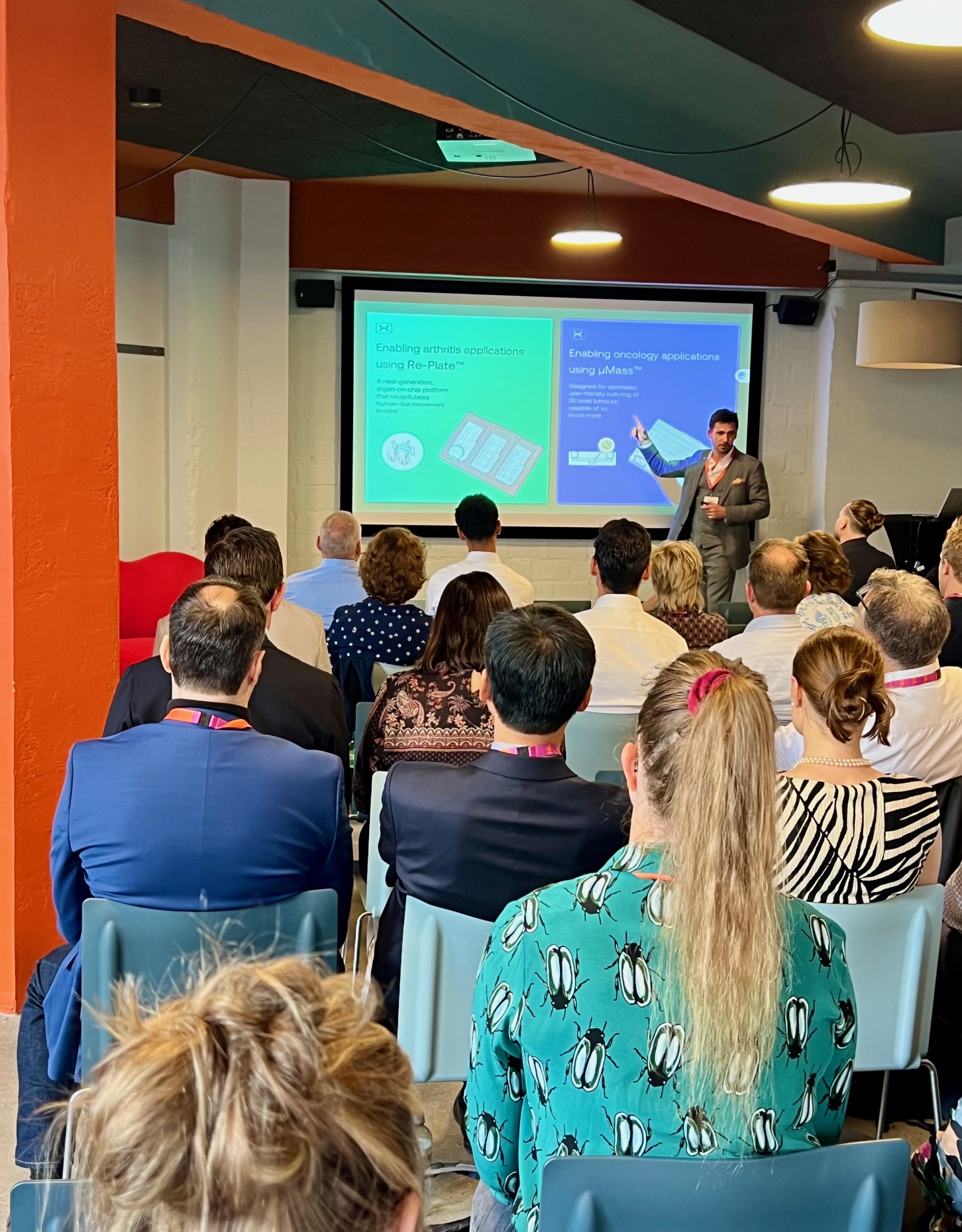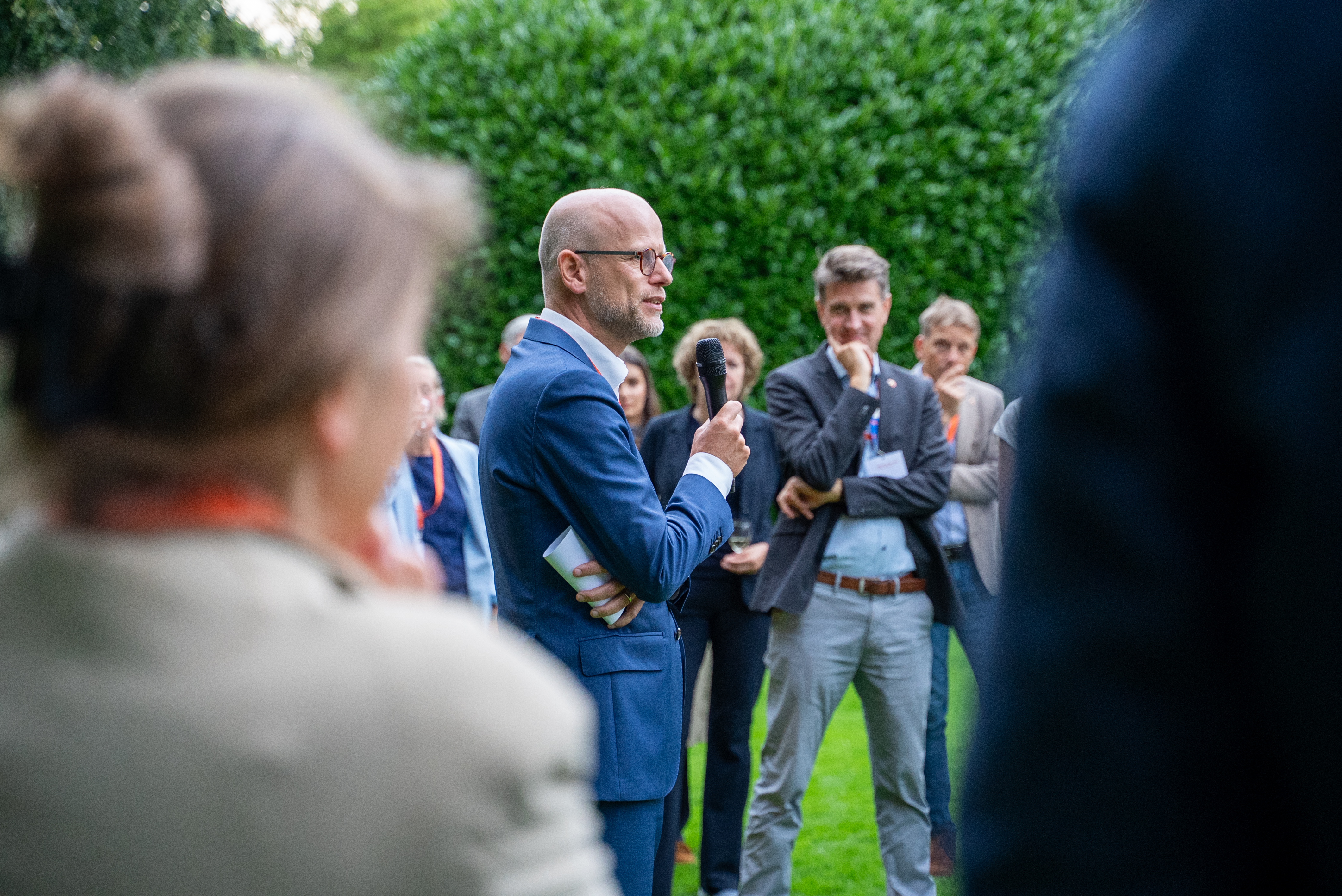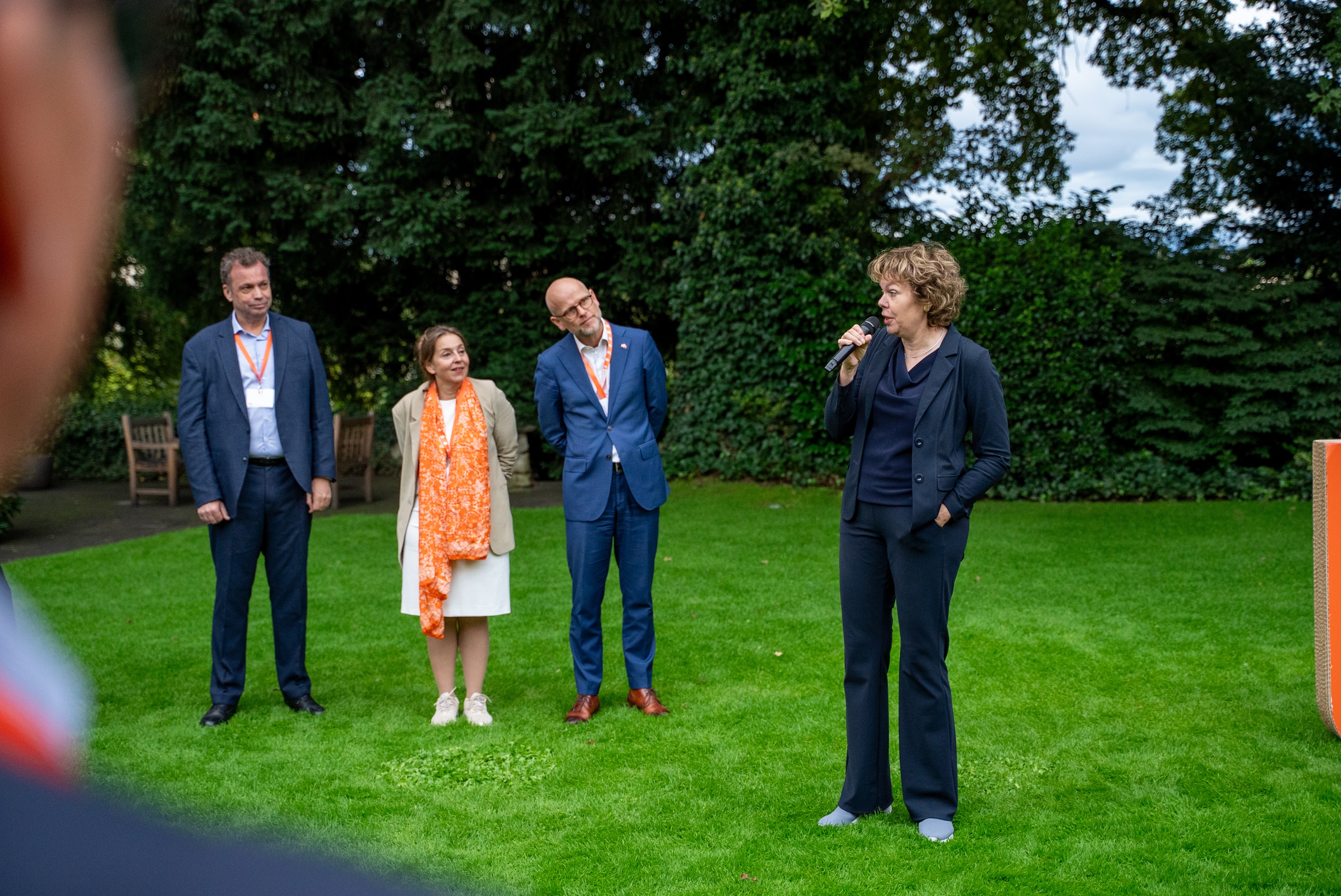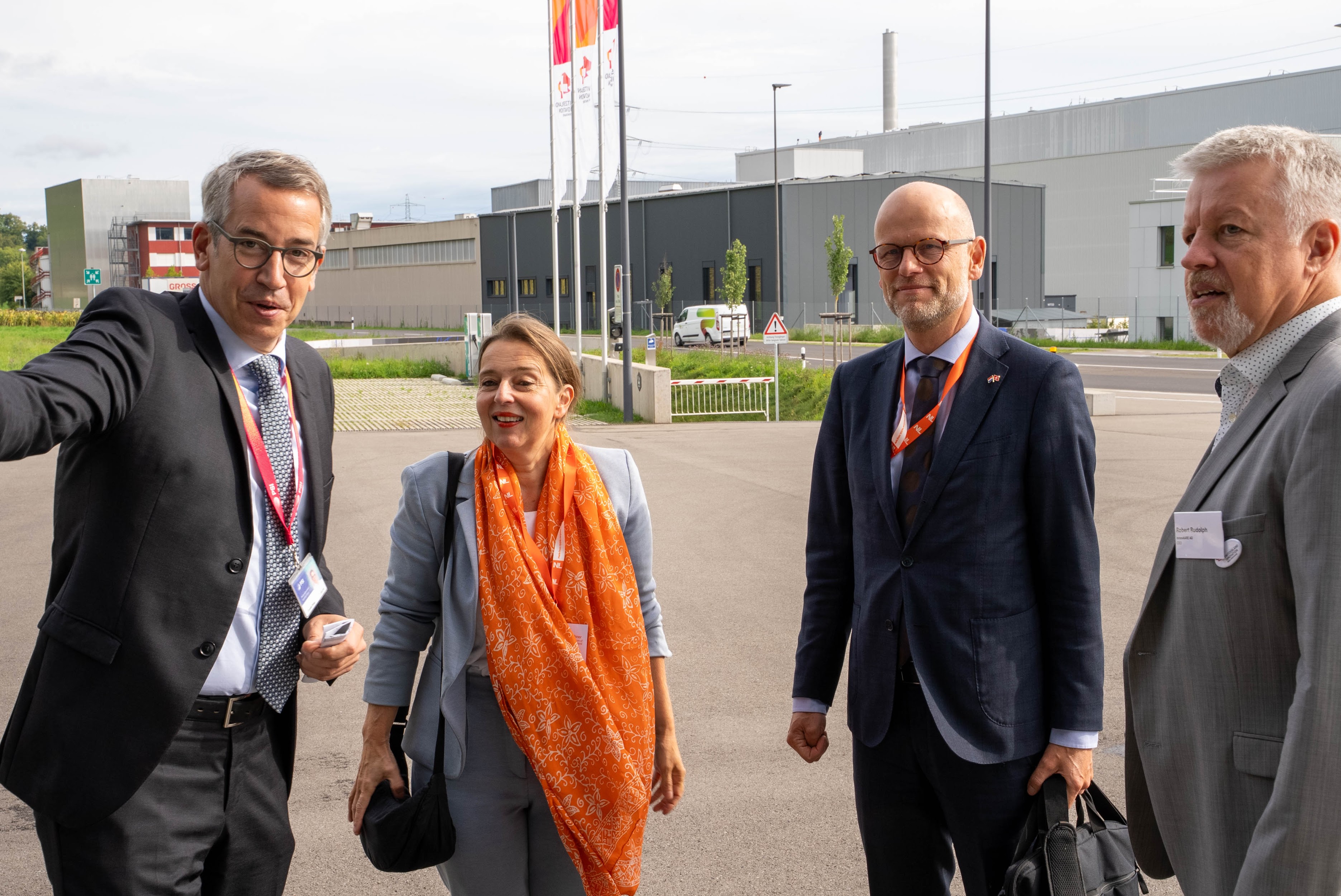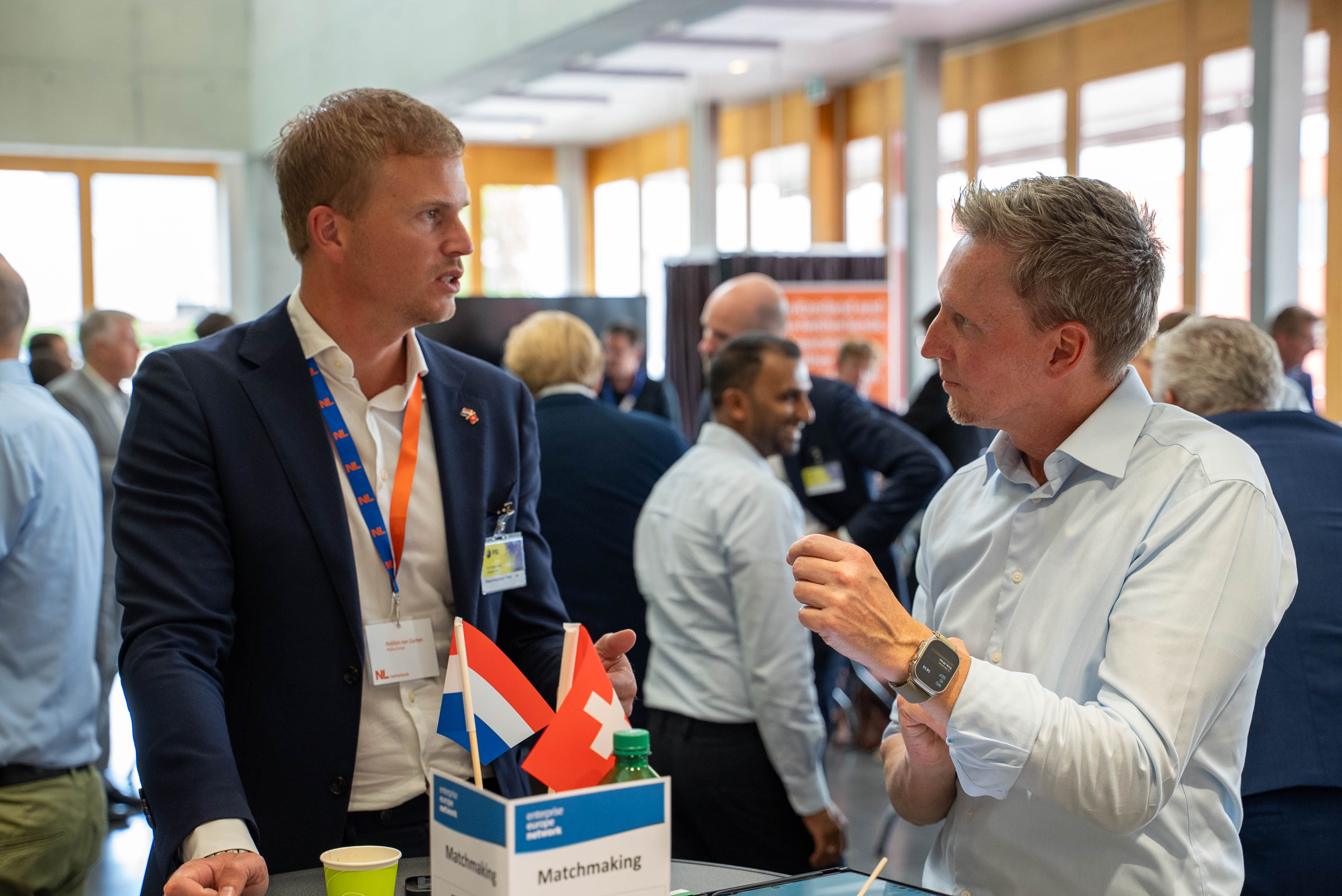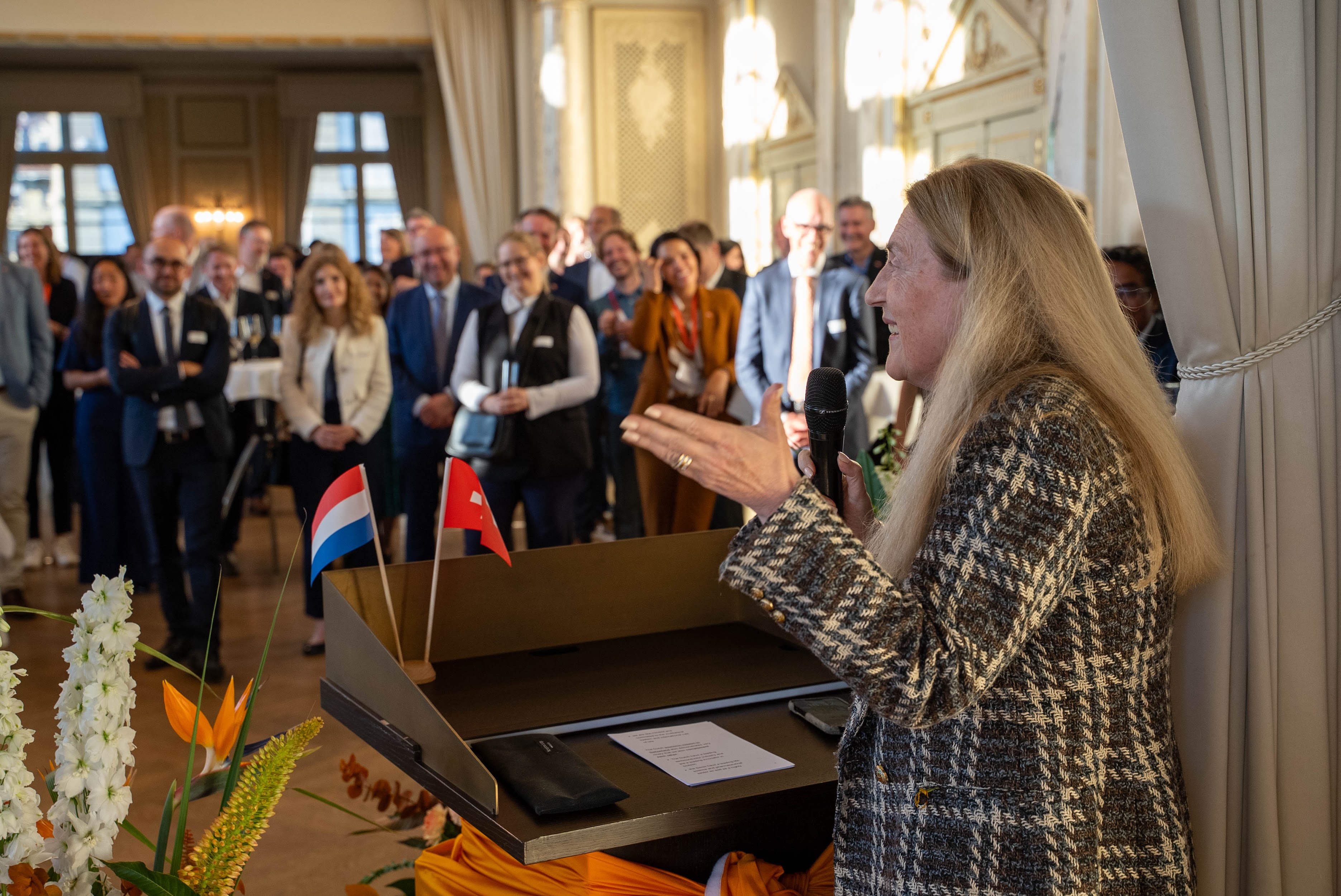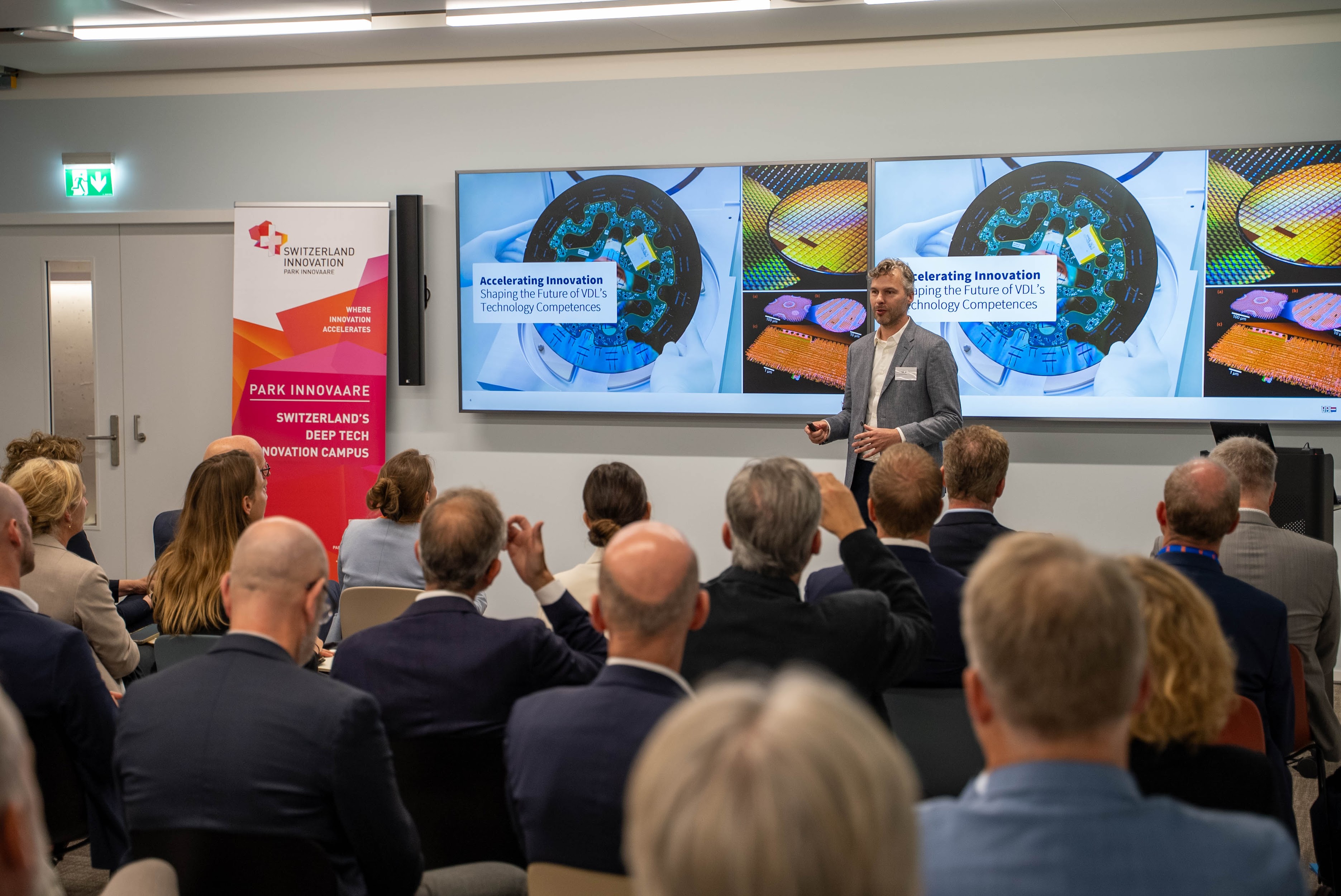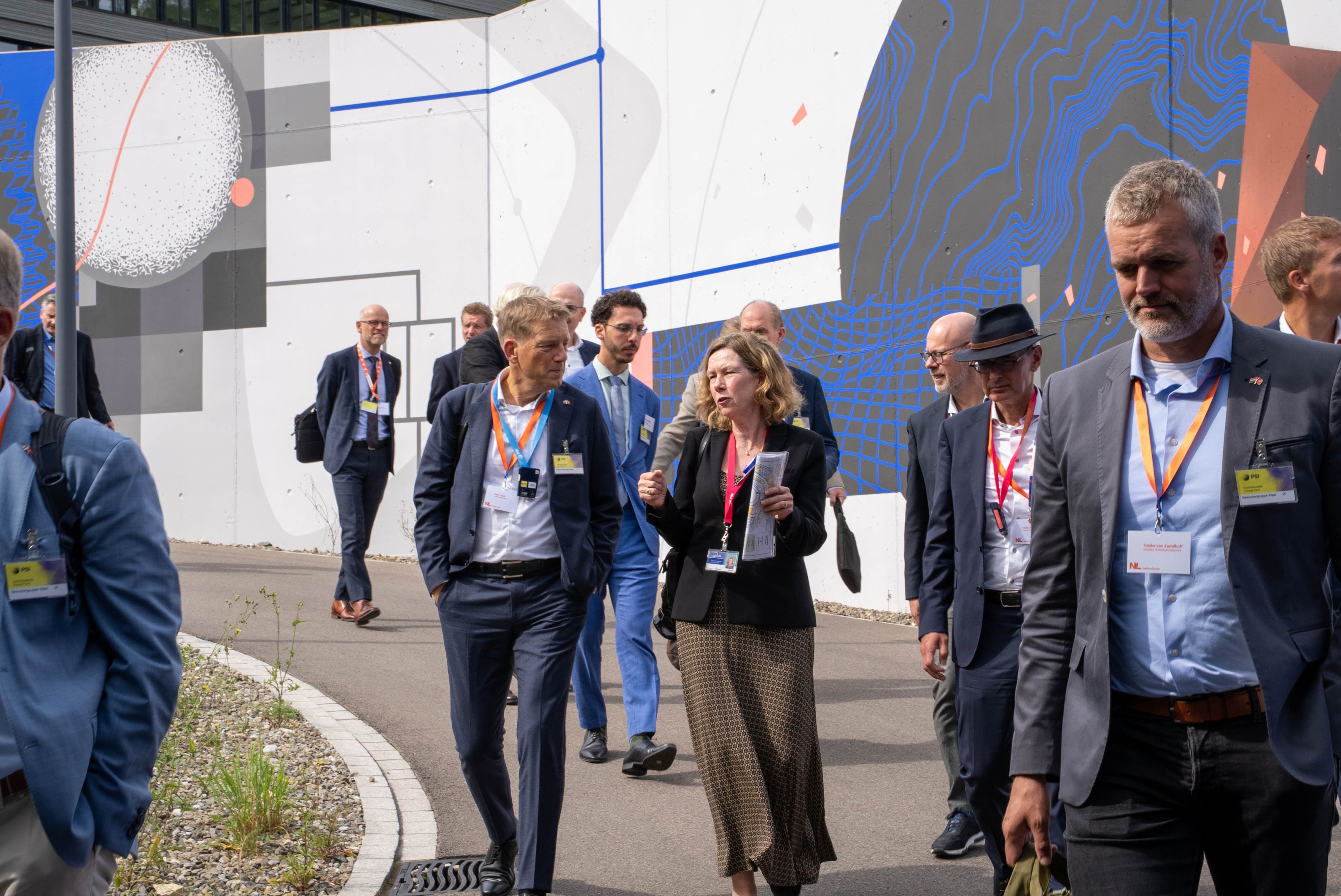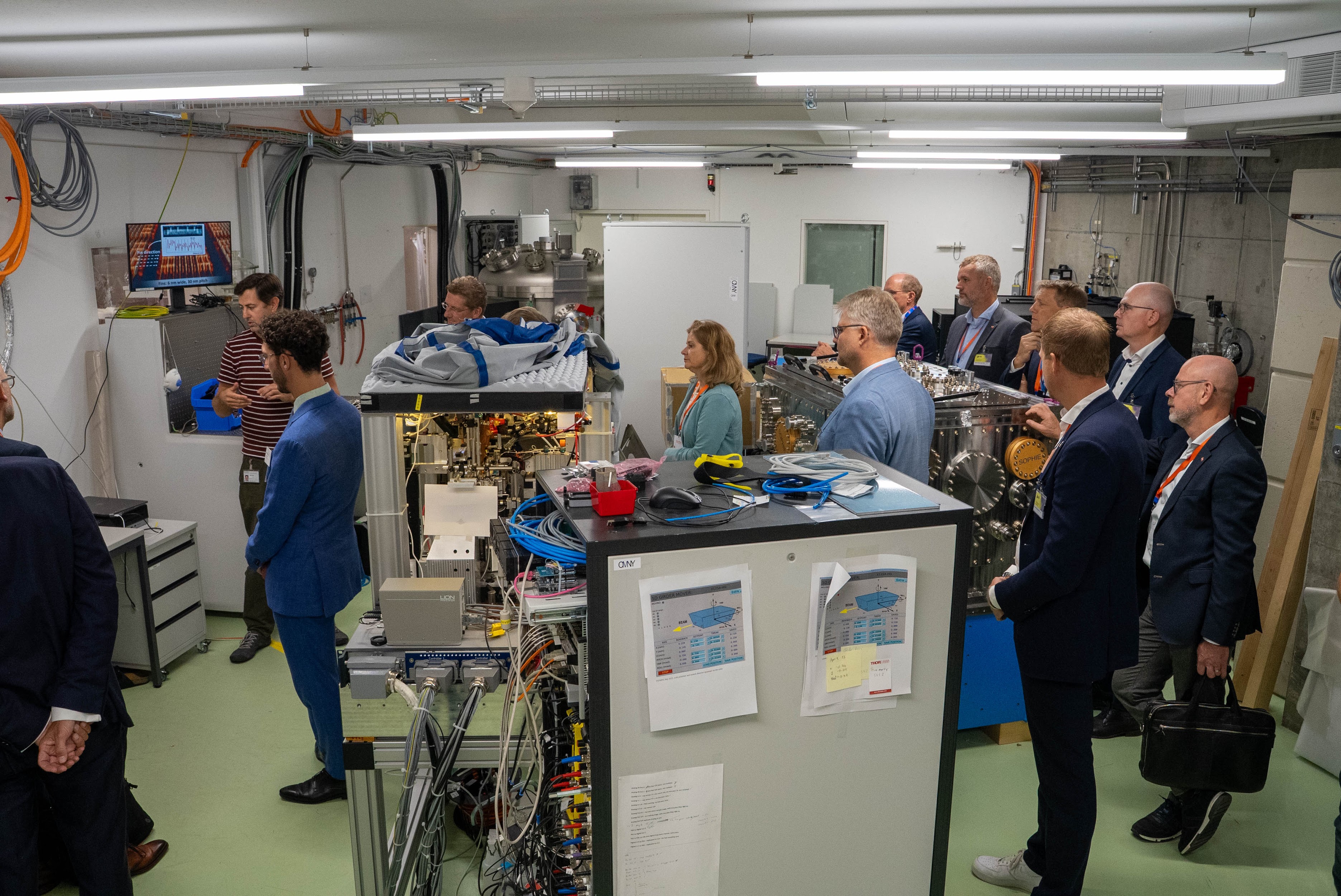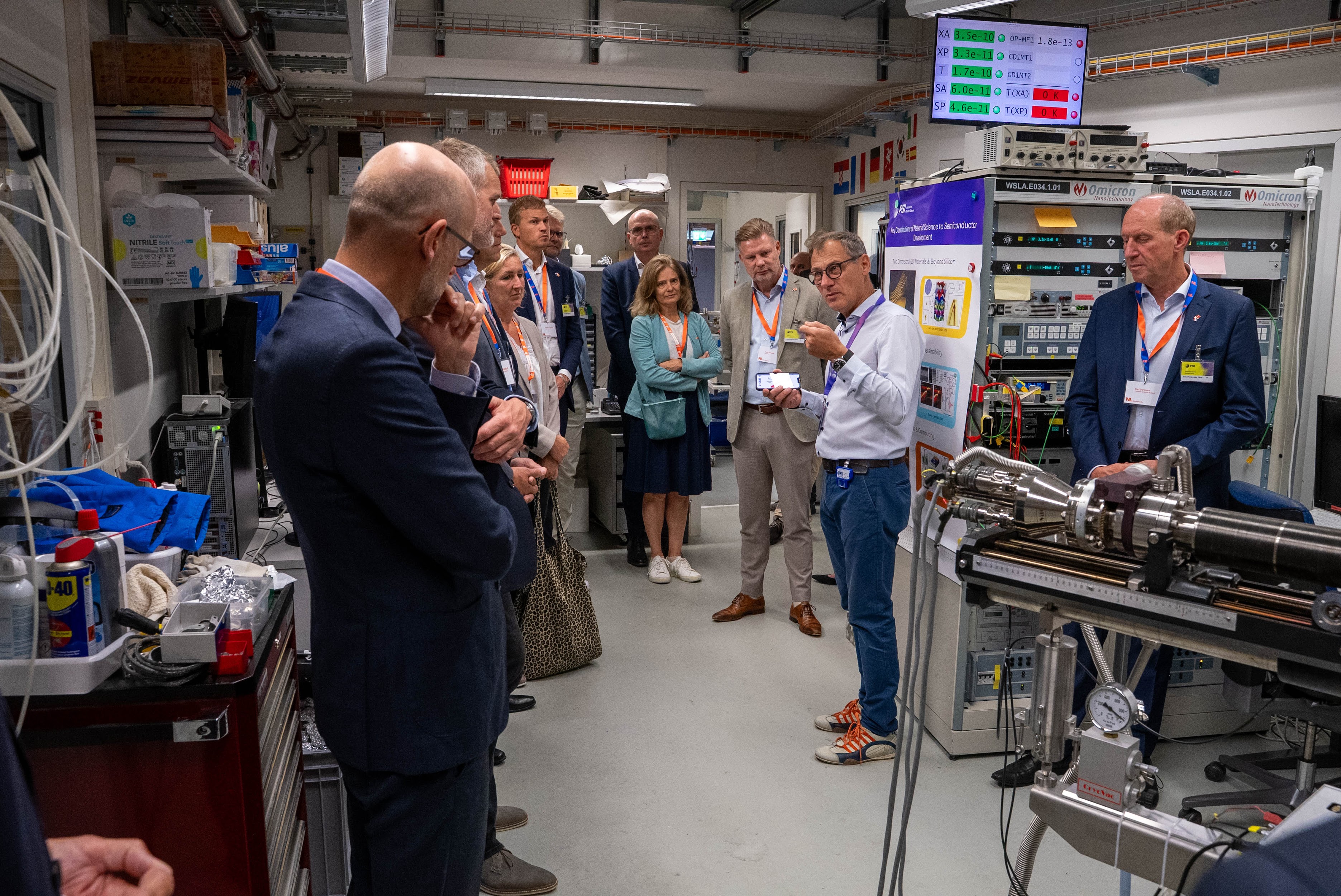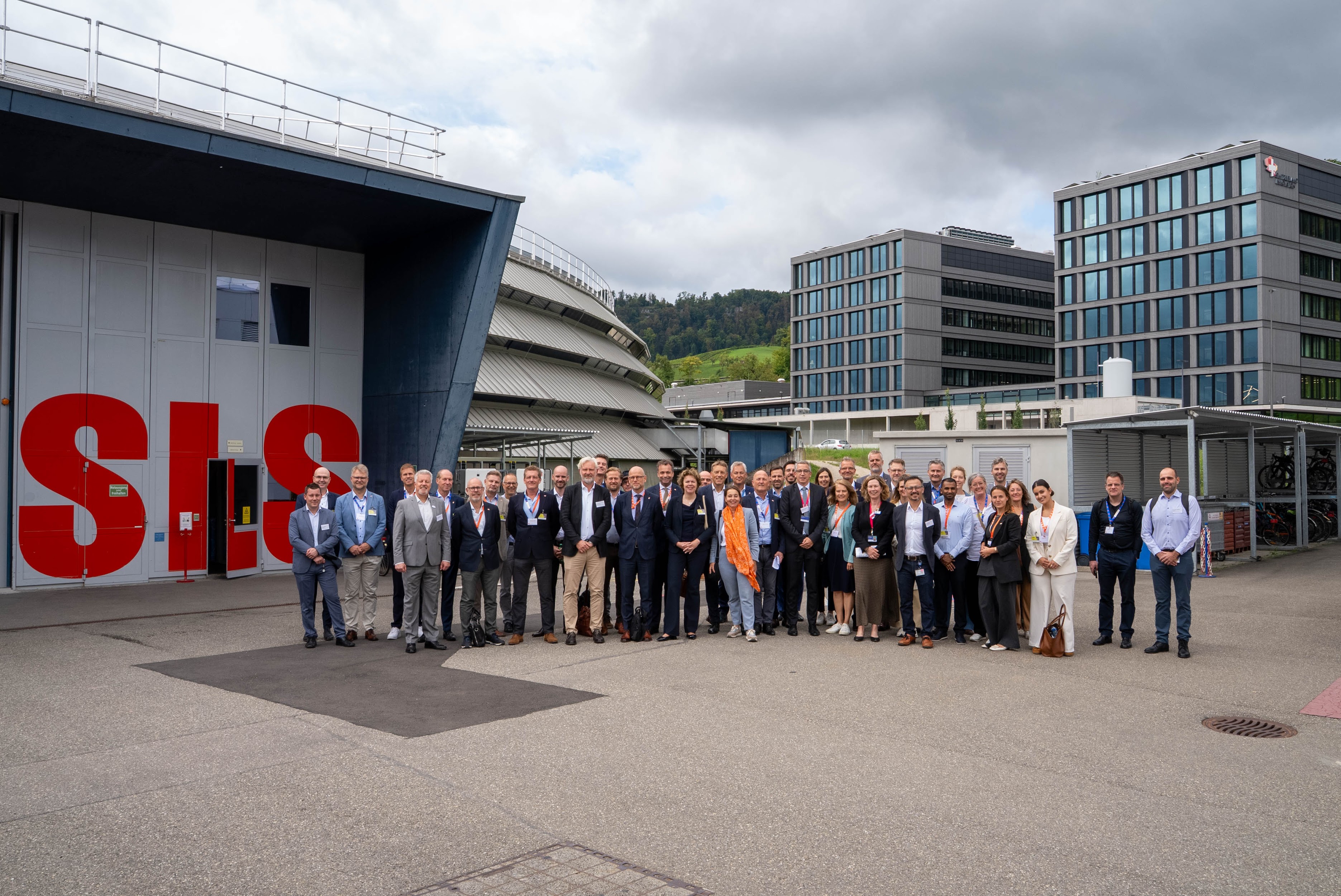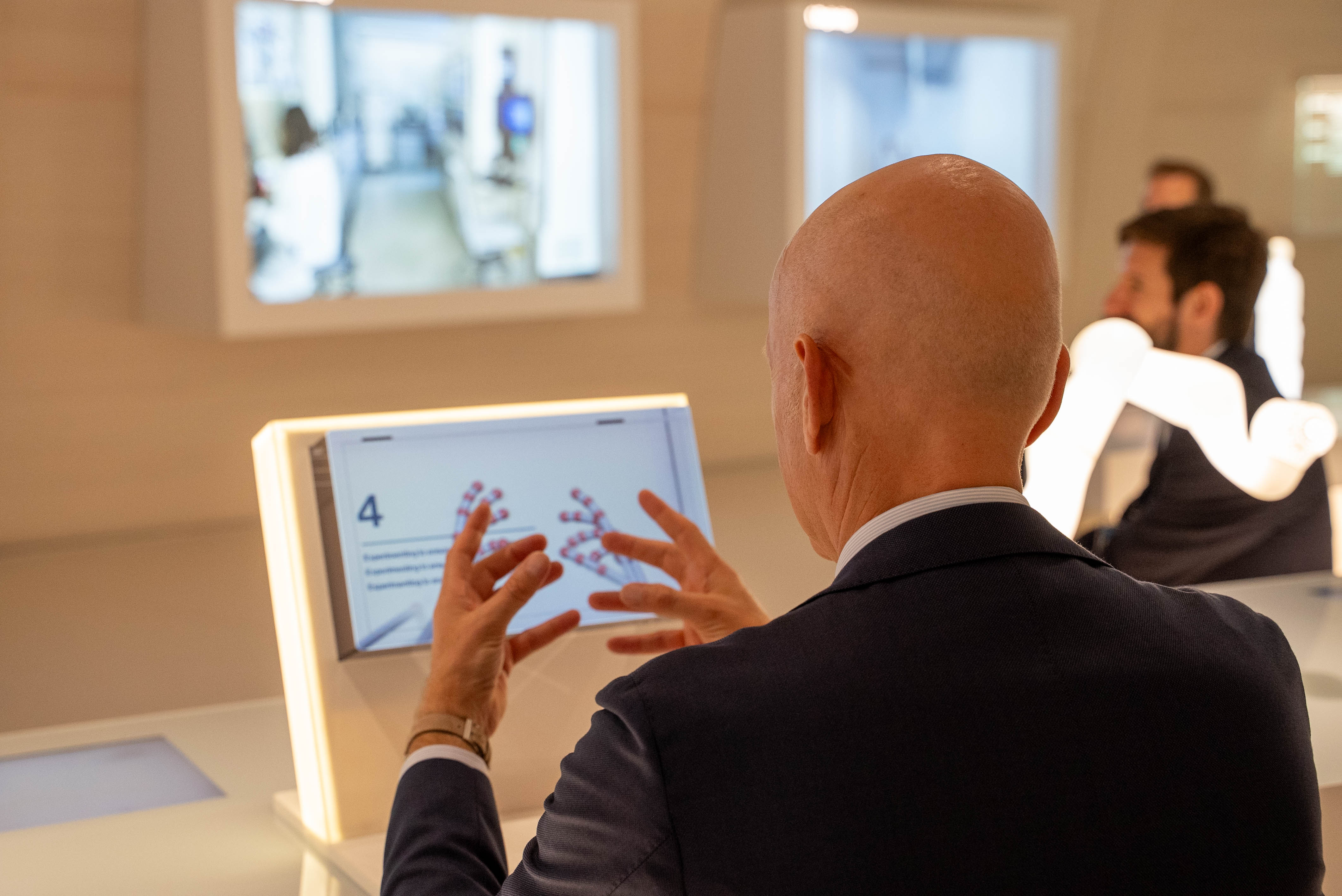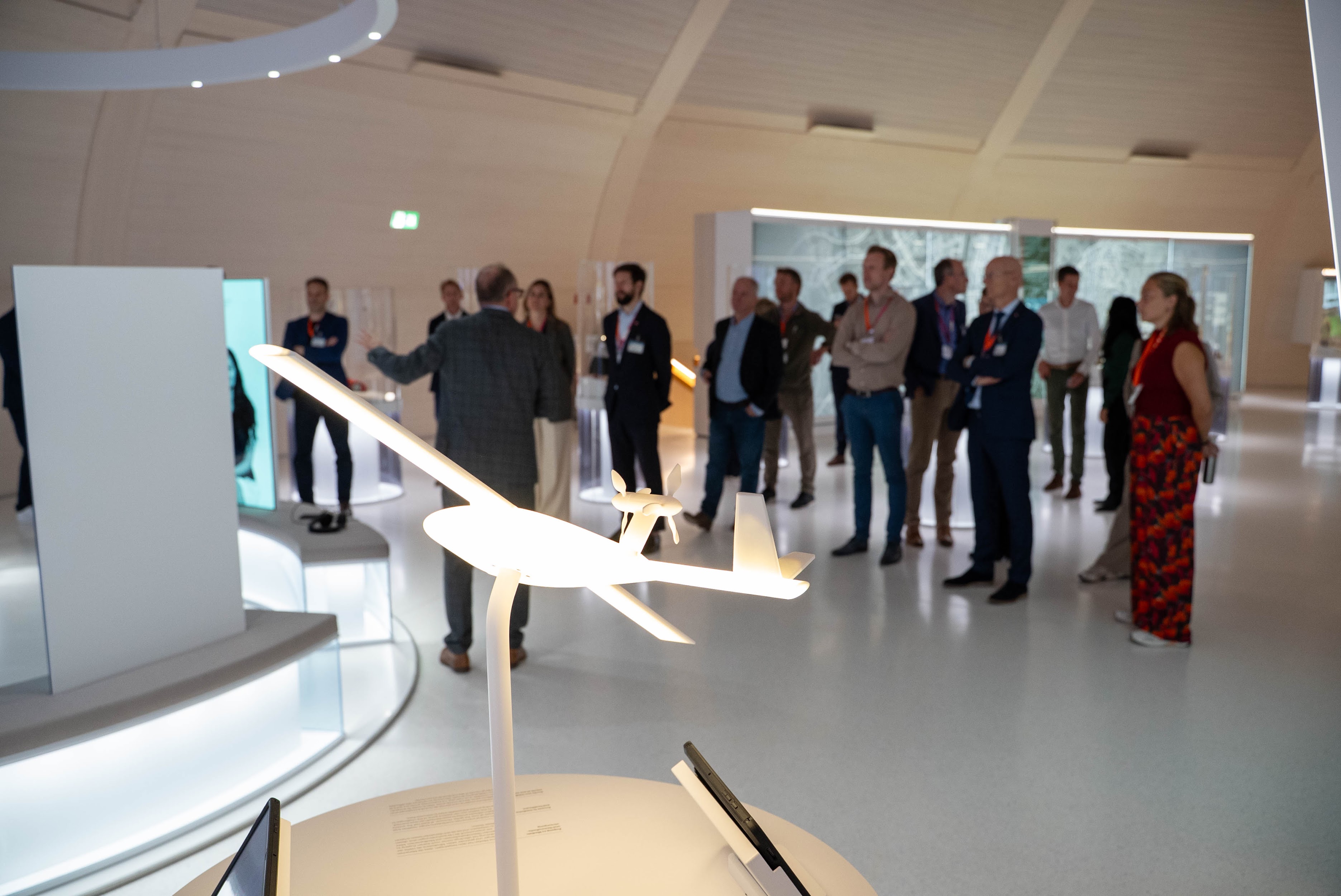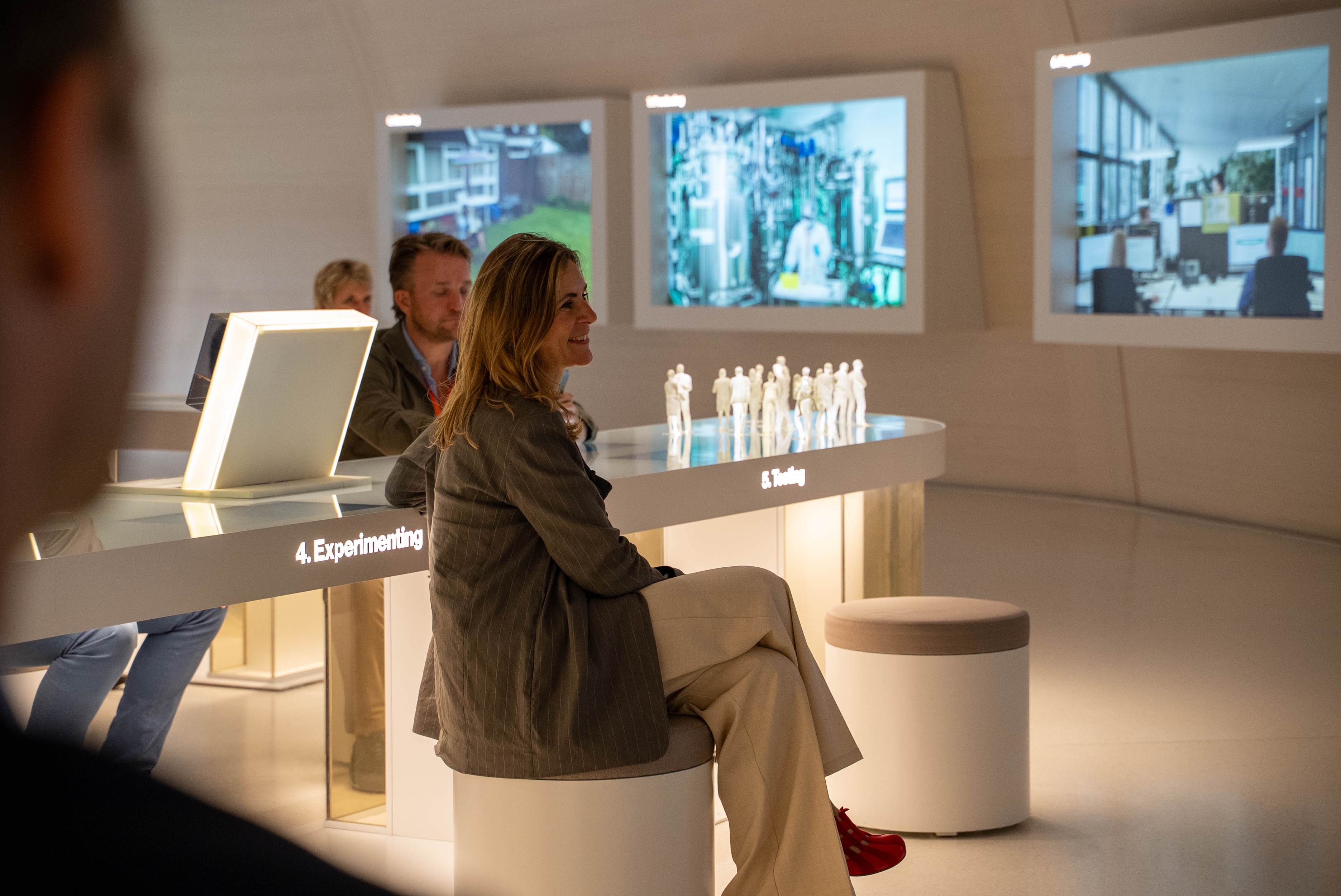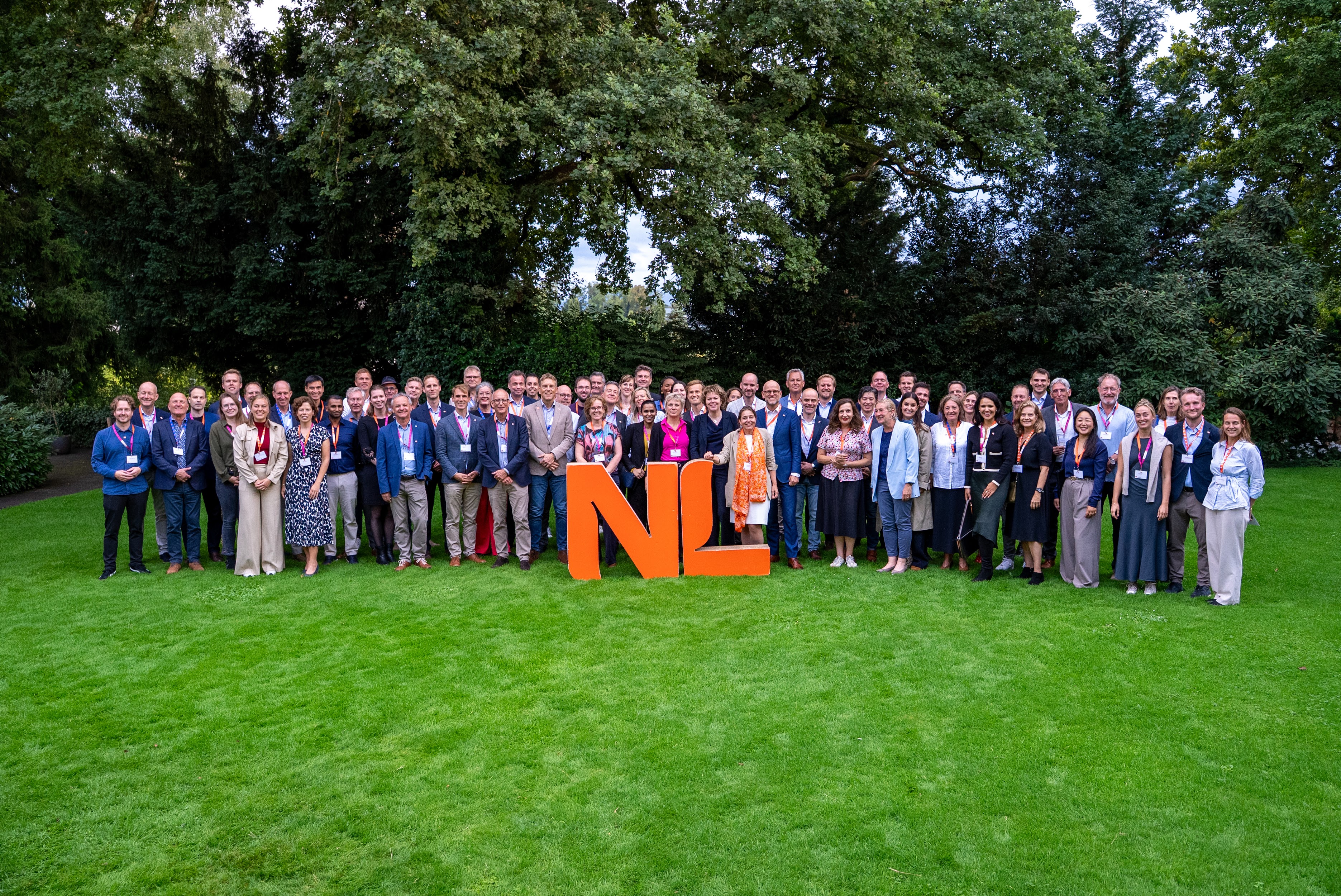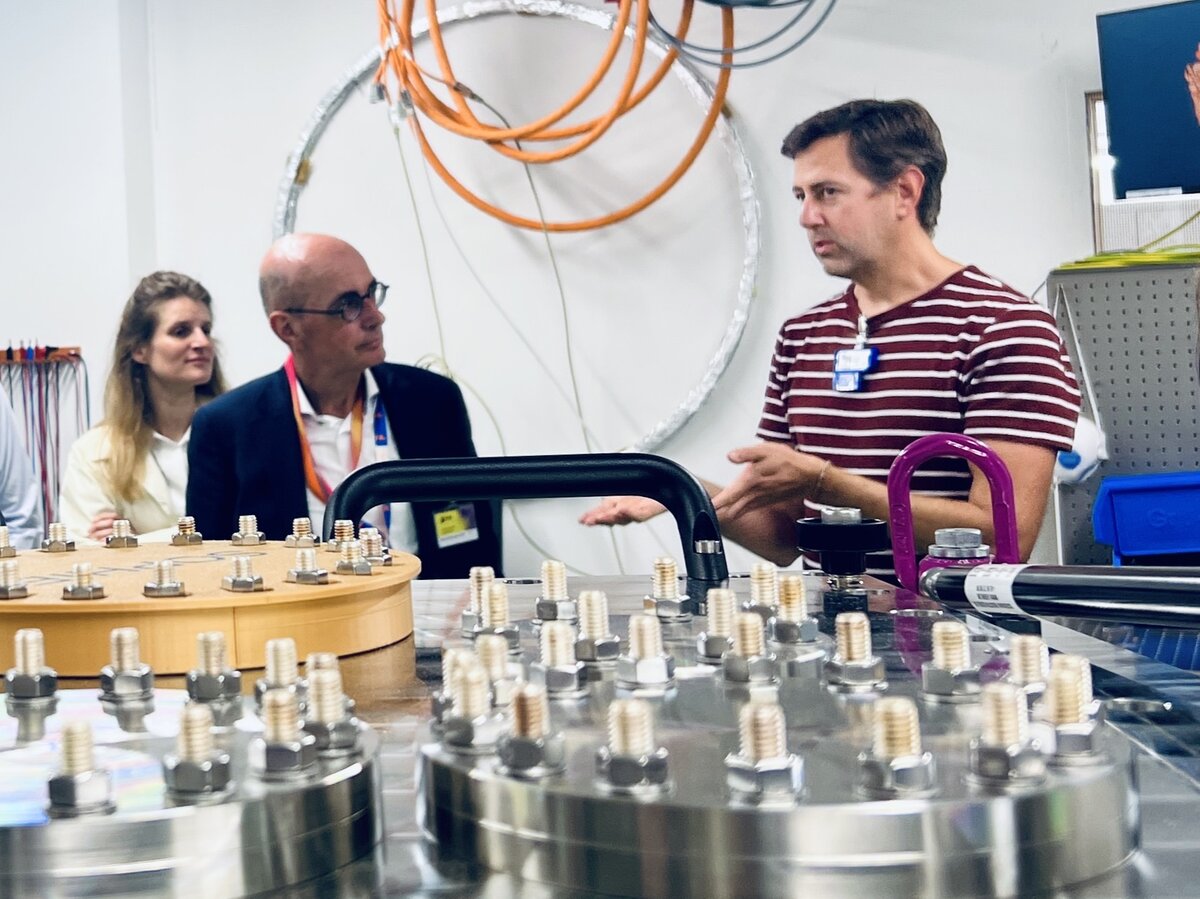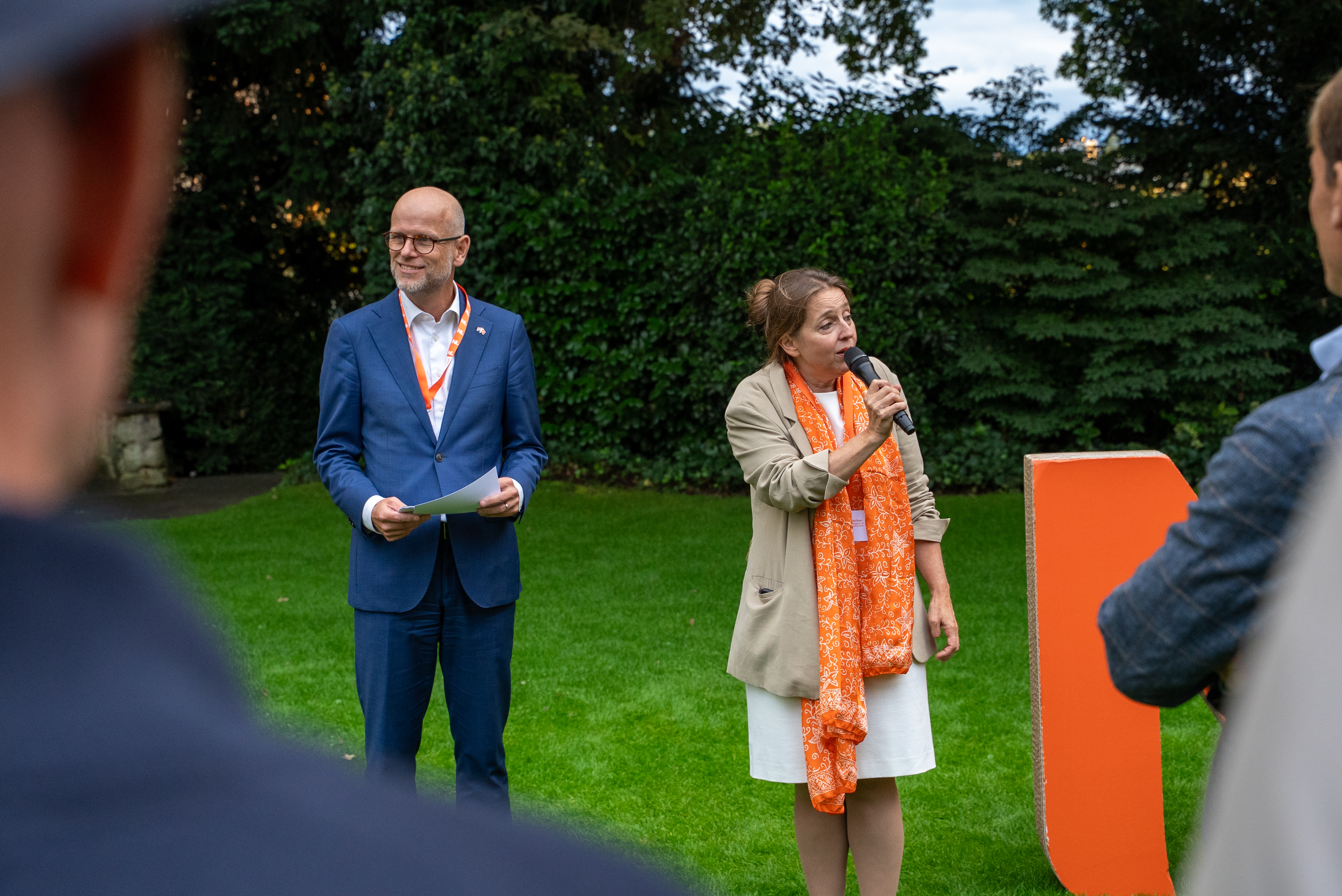The largest trade mission to Switzerland to date brought Dutch companies and knowledge institutes together with the Swiss high-tech, semiconductor, and biotech landscape from September 9 to 11, 2025. The agenda included visits to Novartis, Roche, IBM Research Zurich, Switzerland Innovation Park Innovaare and the Paul Scherrer Institute, as well as matchmaking sessions. Niederlande Nachrichten spoke with participants from the Dutch and Swiss sides about innovations, technological prospects, and why exchange on an equal footing is crucial for successful cooperation.
Strategic partners in Europe
The mission aimed to deepen partnerships: governments, companies, and knowledge institutes are coming together across borders, bringing two of Europe's strongest ecosystems in high-tech and biotech closer together.
Both countries share an excellent research landscape, a mutually enriching business culture, and openness to innovation and international cooperation. Partnerships between companies, government, and research are considered a key factor in bringing ideas to fruition and to international markets. It was precisely this interaction that was the focus of the mission.
Thematically, Switzerland's strengths were directly aligned with the Dutch National Technology Strategy (NTS). These include, for example, quantum technologies, photonics, semiconductor technologies, artificial intelligence, and biotechnology. 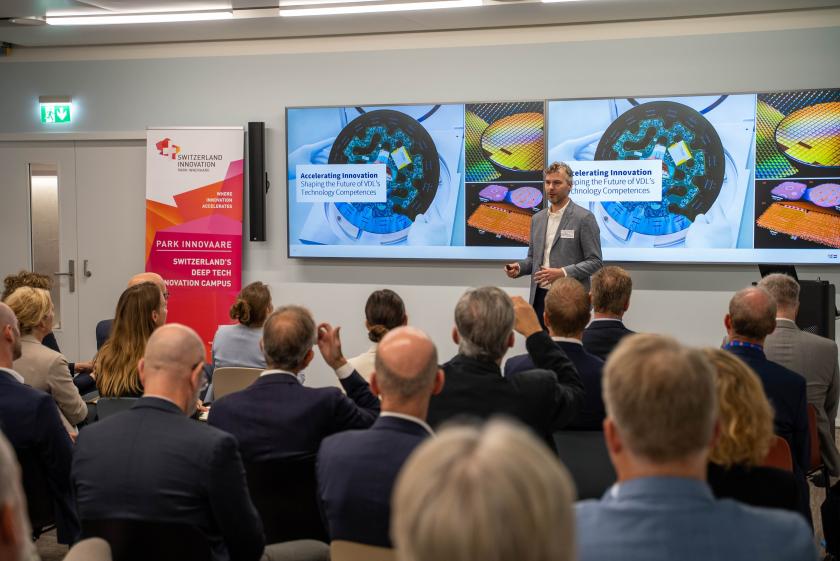
“The Netherlands and Switzerland are both small countries in a large global market, but they are highly innovative and aspire to drive the technologies of tomorrow,” explains John Piggen, Managing Director of VDL ETG. “Especially in today's geopolitical situation, it is crucial to pool innovations, develop smart solutions, and automate in order to remain competitive.”
Biotech: Leveraging complementary strengths
With a strong biotech sector and companies such as Roche, Novartis, Lonza, and CSL Behring, Switzerland is one of the world's leading locations for life sciences. This offers strong synergies with the Netherlands, where the Topsector Life Sciences & Health (Health~Holland) successfully connects academia, entrepreneurs, government and societal organizations in public-private partnerships. Swiss scale and pharmaceutical excellence meet Dutch creativity, entrepreneurship and applied research.
“Precision and reliability from Switzerland meet the Dutch way of open communication and cooperative decision-making. This basis makes trust and collaboration easier,” explained by Hans Schikan, Topteam member of Health~Holland.
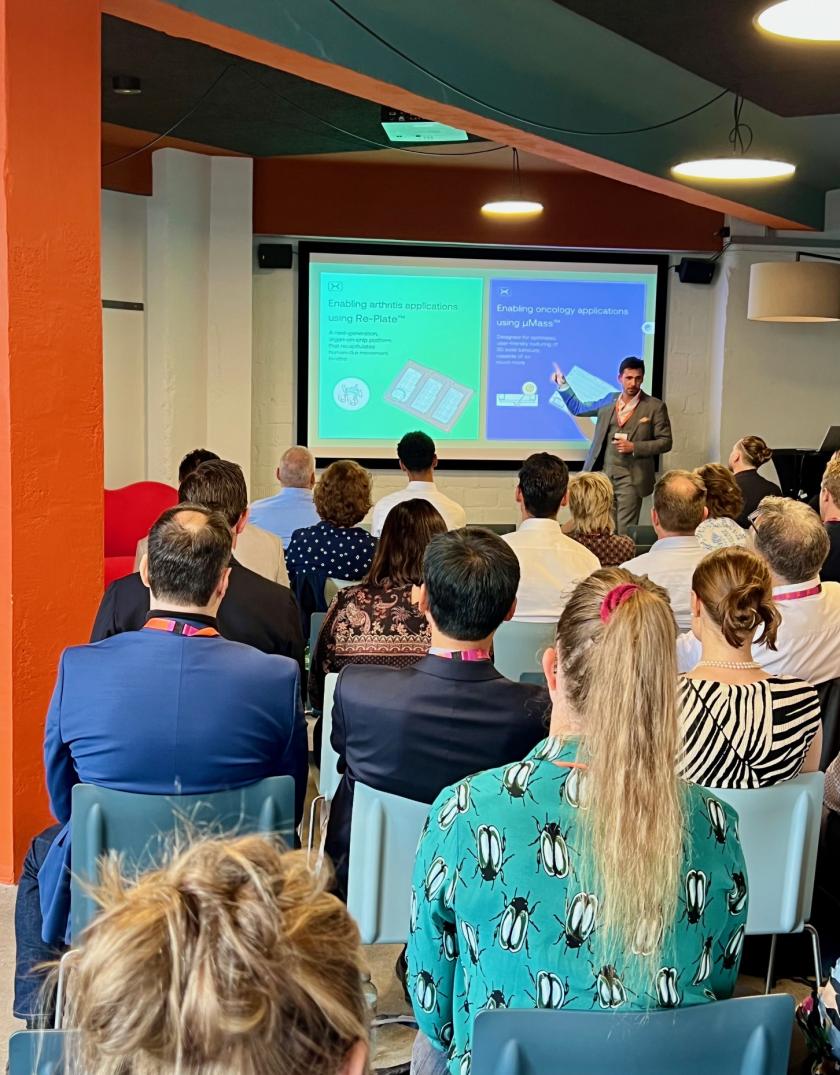
The progress in the field of human-based models is particularly impressive. “Both Roche and Novartis presented organoids and organ-on-chip for drug development,” says Schikan. “It's great to see that this area, in which the Netherlands was a pioneer, is now bearing fruit.”
Nina Hobi, CEO and Scientific Director of Alveolix, also emphasizes the synergies: "In Switzerland, we have close, long-standing partnerships with domestic pharmaceutical companies, while in the Netherlands we have been able to establish important contacts with the consumer goods and food industries. This creates valuable interfaces for new applications – such as our organ-on-chip technology. Trade missions like this help us to leave our comfort zone and develop fresh ideas. Only through networking can major trends such as AI, in silico models, or personalized therapies really be advanced. Swiss SMEs and the Dutch innovation network complement each other perfectly in this regard."
High tech: precision meets innovation
Whether AI, mobility, health, safety or clean energy: without semiconductors, there is no progress. Switzerland is known for its precision engineering and expertise in microelectronics. With its dense value chain and global players such as ASML and NXP, the Netherlands plays a leading role in worldwide chip production capacity. Both countries are investing in the resilience and sustainability of semiconductor supply chains. In this mission, the Netherlands wanted to explore opportunities for collaboration in research, advanced manufacturing, and talent development within Europe, with a focus on long-term value creation. 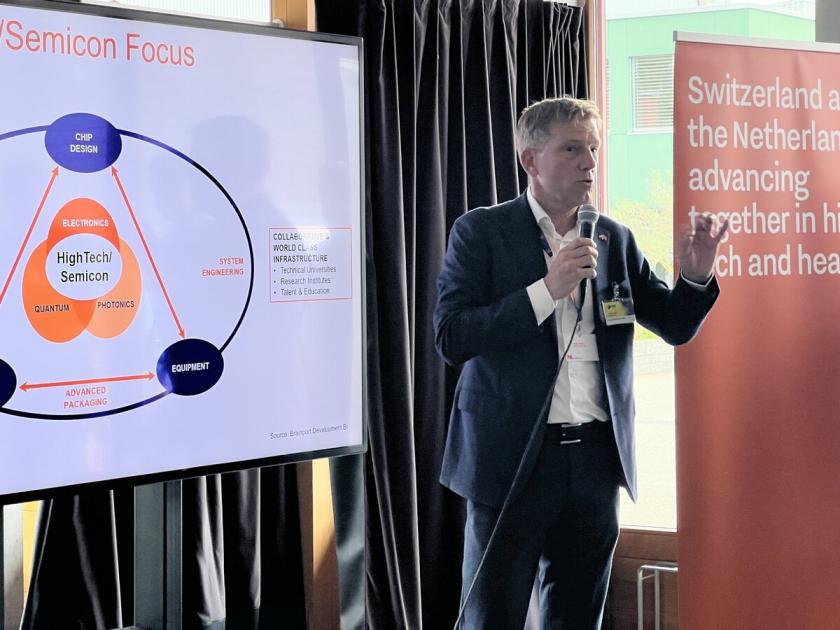
“Switzerland is a particularly exciting partner for us because it has a long tradition in engineering and the development of complex products,” says Peter Stolk, Chairman of Holland High Tech, the top sector High Tech Systems and Materials. “Cross-border exchange is necessary because neither we nor Switzerland can cover the entire ecosystem on our own. Only through cooperation can we make the most of our respective strengths, learn from each other, and create reliable partnerships in the high-tech sector—especially in times of global uncertainty and geopolitical change. I was particularly impressed by how Swiss companies and research institutions are addressing issues that are also in line with the Dutch National Technology Strategy. They deliver state-of-the-art solutions in many of these areas.”
Bas Klaver, Business Development at DEMCON High-Tech Systems, also emphasizes the synergy: “In areas such as quantum technologies, photonics, and measurement technology in particular, we were able to gain deep insights that confirm our technology roadmap.”
John Piggen adds: “We all face the same challenges and can work together to develop technological and strategic roadmaps to meet the future needs and expectations of our customers. Chips are becoming smaller and more powerful, while at the same time quality and cost pressures are increasing. We can master this together if we combine our expertise.”
Direct contact builds trust
The mission offered numerous personal encounters, including matchmaking at PSI and VDL in Villigen. As with any collaboration, such encounters are crucial for building genuine understanding, trust, and respect on a personal level. They also help to create a very pleasant atmosphere.
“Such meetings are more effective and direct than traditional trade fairs,” emphasizes Bas Klaver. “They open doors that would otherwise be difficult to access, build trust, and enable a deep understanding of the market.”
“True partnerships are formed in person,” adds Hans Schikan. “A mission creates platforms for discussions and chance encounters that spark new ideas in biotech innovation.”
Peter-Jan Hendrikx from High Tech NL also emphasizes: “Face-to-face networks bring us closer together than purely digital formats.”
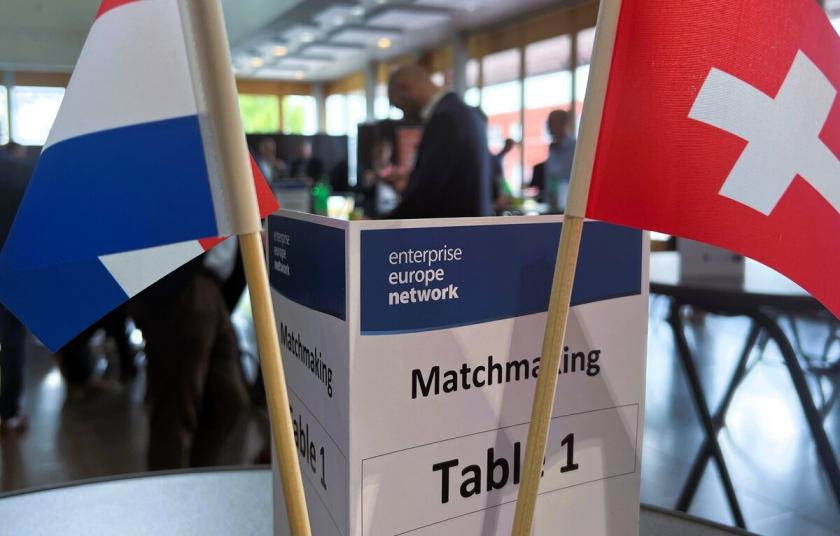
Looking ahead: Europe as a region of innovation
European countries such as the Netherlands and Switzerland are relatively small compared to the US and China. Cross-border cooperation is therefore essential in order to pool complementary strengths, accelerate innovation, and ensure that developments quickly reach market maturity.
“We develop personalized therapies in regenerative medicine. Here, I not only met potential partners from Switzerland, but also made valuable contacts within the Dutch delegation,” explains Dan Jing Wu, CEO and co-founder of VivArt-X. "Innovation knows no boundaries; it thrives on cross-border cooperation. Both countries share the conviction that innovation is the key to maintaining an economic edge while creating real new opportunities for patients."
Daniela Salvatori from the Centre for Animal Free Biomedical Research adds: “Delegation trips not only broaden horizons, but also lay the foundation for future partnerships. It was particularly exciting to see how public-private partnerships are organized in Switzerland.”
“The mission showed that Switzerland is actively seeking cooperation,” summarizes Peter-Jan Hendrikx. “Both governments support these initiatives, especially now that Switzerland has a customs tariff of 39% in the US, and we are facing geopolitical challenges. Cooperation creates a solid basis for pragmatic, highly qualified partnerships between our countries.”
Conclusion: Cooperation as the key to the future
The trade mission demonstrated the enormous potential of close cooperation between the Netherlands and Switzerland. Both countries bring complementary strengths in high-tech, semiconductors, and biotechnology to the table and share a similar culture of innovation. Personal encounters and concrete projects have made it clear that innovation without borders is possible—when business, research, and politics act together.
For Europe, this means that only through networked partnerships can the technological challenges of our time be mastered and solutions developed that have a global impact.
See the photos of the mission below:
